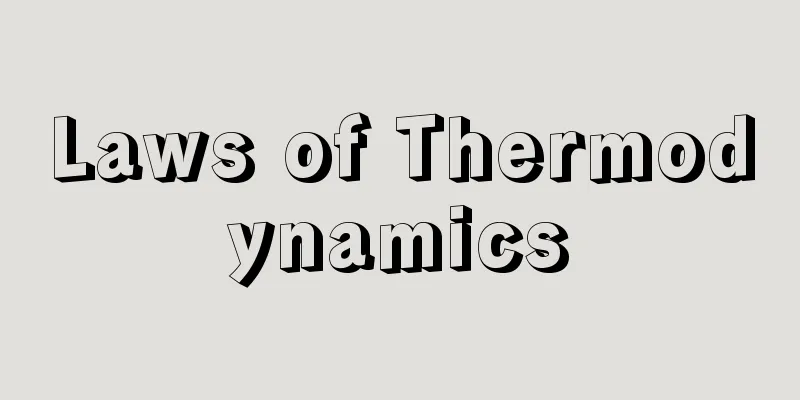Provincial law - Bunkoku law

|
Laws enacted and issued by sengoku daimyo to govern their territories (bunkoku). They are also called sengoku law (warring states law). They are collected laws that were enacted and issued with permanent force to serve as the basis for the overall laws of their vassals and bunkoku, in contrast to the individual laws that sengoku daimyo issued from time to time as needed. They inherited the traditions of samurai law that had existed since the Goseibai Shikimoku (Code of Punishment for Offenses), and further absorbed local customary law such as family precepts that targeted the regulation of clans and descendants, and ikki contracts that aimed to regulate each other, with the aim of establishing independent public authority within the bunkoku. Furthermore, bunkoku law had a major influence on early modern samurai law, such as the Edo Shogunate law and the various feudal domain laws that followed. Among the provincial laws, the Ouchi family's wall inscriptions and the Sagara family's laws are the earliest examples, and other representative examples include the Imagawa family's Imagawa Kana Mokuroku, the Date family's Jinkaishu, the Takeda family's Koshu Laws (Shingen family law), the Yuki family's laws, the Rokkaku family's Shikimoku, the Miyoshi family's Shinka Seishiki, and the Chosokabe Motochika Hyakujo. Even warring lords who did not have provincial laws as a collection of laws were known to have had basic laws within their territories called "national laws," such as the Gohojo family. [Toshiaki Ohkubo] Source: Shogakukan Encyclopedia Nipponica About Encyclopedia Nipponica Information | Legend |
|
戦国大名が領域(分国)支配のために制定発布した法令。戦国家法(かほう)ともいう。戦国大名が随時必要に応じて発給した個別法に対し、家臣団および分国に対する法全体の基礎とする目的で、恒久的効力を付与し制定発布した集成法である。その性格は、御成敗式目(ごせいばいしきもく)以来の武家法の伝統を継承し、さらに一族や子孫を規制対象とした家訓や相互規制を目的とした一揆(いっき)契状等の在地慣習法を吸収して、分国内における独自の公権の確立を目ざしたものであった。さらに、分国法は以後の江戸幕府法や諸藩法などの近世武家法に大きな影響を及ぼしている。分国法のなかでは、大内家壁書(かべがき)や相良(さがら)氏法度(はっと)などがもっとも早い例であり、そのほか、今川(いまがわ)氏の今川仮名目録、伊達(だて)氏の塵芥集(じんかいしゅう)、武田氏の甲州法度之次第(しだい)(信玄(しんげん)家法)、結城(ゆうき)家法度、六角(ろっかく)氏式目、三好(みよし)氏の新加制式(しんかせいしき)、長宗我部元親(ちょうそがべもとちか)百箇条などが代表的なものである。また、集成法としての分国法をもたない戦国大名においても、後北条(ごほうじょう)氏の場合のように、「国法(こくほう)」とよばれる領国内における基本法規の存在したことが知られている。 [大久保俊昭] 出典 小学館 日本大百科全書(ニッポニカ)日本大百科全書(ニッポニカ)について 情報 | 凡例 |
Recommend
Plate fuse - Itafuse
…Low melting point alloys include cellulose (Sn, ...
virtutes cardinales (English spelling) virtutes cardinales
… The characteristics of Christian morality are m...
Common cold syndrome
…Fever usually lasts for 3 to 5 days. Infectious ...
United Nations Framework Convention on Climate Change
The first treaty under the United Nations to set a...
Blue indigo - Aoso
Plant. A perennial herb of the Urticaceae family, ...
electronic counter-countermeasures
(3) ECCM (electronic counter-countermeasures) Act...
Akron (English spelling)
A city in northeastern Ohio, United States. Founde...
Kanaoka
The title of a kyogen piece. Female kyogen. A pie...
Interpreter - Interpreter
Software that converts source code in an interpret...
Aiolos
…The lyre is a stringed instrument whose strings ...
Carlton (political club) (English spelling) Carlton
…Other clubs were established, including the lite...
Ani [town] - Ani
A former town in Kitaakita County, located in the ...
Sulfuric acid - Ryusan (English spelling)
Chemical formula: H2SO4 , formula weight : 98.1. ...
Physalis
…This is called color wax. Representative example...
Kanshin-in Temple
…The shrine land of Gion Kanshin-in Temple in Kyo...









